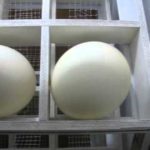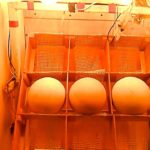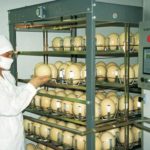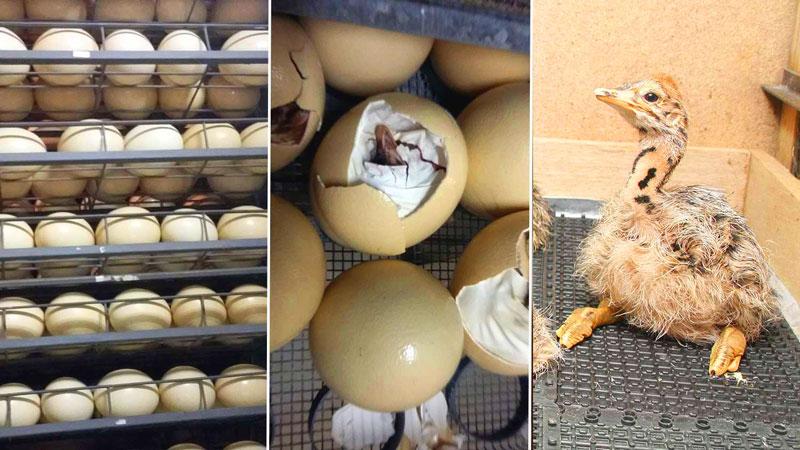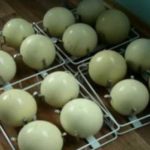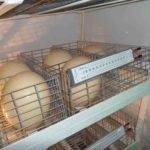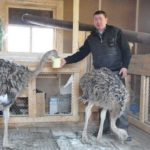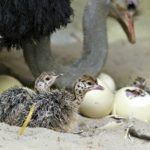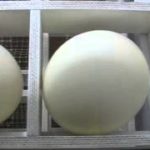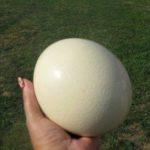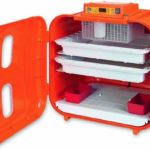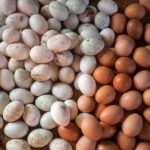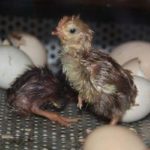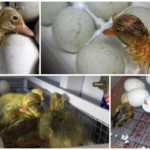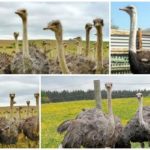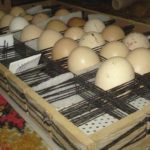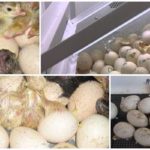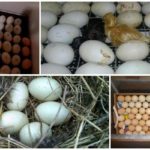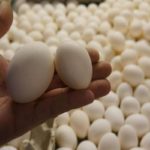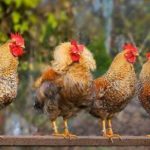The further increase in the number of livestock on the farm depends on the correct choice of incubator for ostriches. At home, females do not always hatch chicks on their own. Owners of feathered flocks often resort to artificial methods. To avoid mistakes, the owner must understand the process. It is important to create normal conditions for raising young animals.
Selecting an incubator
Chinese manufacturers offer different models of incubators.But farmers are advised to give preference to Russian brands and choose equipment with a warranty period. It is also worth paying attention to other characteristics:
- The presence of thermoregulating devices - sensors for monitoring the regime and a special film for heating the raw materials.
- An automatic egg turning system simplifies maintenance.
- Devices that control humidity levels. You can also choose mechanical varieties, which are cheaper.
- Incubators made of steel are considered the best. It is permissible to use durable plastic and insulation.
Additionally, trays for storing material are purchased.
Egg selection
Ostriches usually lay from April to October. One female produces up to 20 eggs. A whole, undamaged product is selected for placement in the incubator. Depending on weight, there are 2 classes. Main characteristics:
| Variety | Egg weight, kg | Shell color | |
| 1 category | 2nd category | ||
| Emu | 0,5-0,75 | 0,35-0,57 | dark green |
| Ostrich | 1,5-1,8 | 1,1-1,5 | white |
The material obtained from a female that has just laid eggs is of high quality. When handling eggs, wear sterile gloves to prevent infection from entering the shell.
Bookmark and storage
The product is placed with the blunt base facing up. But in ostrich eggs it is difficult to determine where the sharp end is. Experienced poultry farmers do this using an ovoscope or a lamp. The most common is the bookmark method, which ensures horizontal orientation when placed.
First of all, category 1 products enter the incubator. And only after installing one class do they begin to lay out the next one. Outside the incubator, eggs are stored for no more than a week in a room with an air temperature of up to 15 ° and a humidity level of 75%.
Disinfection of eggs and incubator
Before being placed in the incubator, eggs are cleaned of dirt and disinfected. Brushes with hard bristles should not be used to avoid harming the embryo.
For sanitary treatment, the drug “Virkon” is used:
- Take 3 grams of powder per liter of water. The mixture is heated to a temperature that is 5 degrees warmer than the egg itself.
- Choose a soft cloth or brush to work with.
- After removing dirt, the product is completely dried on all sides.
The incubator is sprayed with a chloramine solution, then washed with clean water and then ventilated for 24 hours. Sometimes smoke from burning formaldehyde or radiation from ultraviolet devices is used for disinfection. Another method involves placing a warm mixture of formaldehyde and potassium permanganate inside the equipment. Evaporation helps protect against pathogenic microorganisms.
Turning and spraying
For normal development of embryos, they must be turned over up to 8 times a day. The process can be automatic. When acting independently, ensure strict adherence to the schedule. After 39 days, the eggs are transferred to a hatching cabinet and left to lie motionless in a horizontal position.
Spraying is resorted to if the recommended humidity level cannot be established inside the incubator. Use boiled water, cooled to room temperature. It is not the eggs themselves that are moistened, but only the storage containers.
Incubation tables
Modern incubation equipment is equipped with sensors for monitoring the necessary indicators. For different periods of development of the African ostrich embryo, special conditions are created:
| Stages, days | Temperature | Humidity | Number of egg turns |
| 1-14 | the air is heated to 36.3-36.5 °C | maintain a constant level of 20-25% | 23-25 |
| 15-21 | 23-25 | ||
| 22-31 | 4 | ||
| 32-38 | 2 | ||
| 39-40 | 35,8-36,2 ° | 40-45 % | 0 |
| 41-43 | 60-70 % | 0 |
For emu the mode is different:
| Periods, days | Air temperature | Humidity level |
| from 1 to 46 | the indicator does not change and is 35.6-36.2 °C | 24-30 % |
| 47-55 | 35.3-36 °C | 58-61 % |
Ventilation of containers is also organized in the incubator chamber. At the initial stage of development, the volume of oxygen is provided up to 300 ml per minute, before pipping, it is increased to 545.
Developmental stages and ovoscopy
There are several stages of embryo development:
- In the first week, when examined with an ovoscope, the embryonic membrane is visible under the shell, which occupies a fifth of the internal space.
- After 14 days, the shadow already fills ½ of the entire surface.
- After 24 days, only a sixth share remains free.
The embryo completely fills the egg a month after being placed in the incubator.
When do the chicks hatch?
African ostriches peck at the shell after 40 days. Emu chicks are born almost 2 months after being placed in the incubator. As the embryo develops, the egg loses weight. At different stages, the products are weighed to determine the percentage of shrinkage. Allowable reduction:
| Incubation periods | Weight reduction for every 100 grams |
| 1 Week | 2,3 |
| 2 week | 4,8 |
| 3 week | 7,3 |
| 1 month | 9,9 |
Exceeding the indicator means insufficient humidity in the incubator chamber, a change downward means excess. Up to 14% losses for ostriches and about 18% for emus are considered normal.
Actions after the birth of ostrich chicks
When the chicks just begin to break through the shell, it is necessary to adjust the air parameters. Humidity is set to 30%, temperature is increased by 0.5 °C with a small number of eggs and lowered to the same level if there is a lot of raw material.
At the stage of complete destruction of the protective shell, the humidity is increased to 60%. This environment is favorable for newborn ostrich chicks. If the young animals cannot cope with pecking, you can lengthen the break in the shell. After the ostrich chicks are born, they are placed in a brooder. In a cage equipped with heating elements, babies dry out and gain strength.
After this comes the weighing stage. The data will allow you to control your weight gain in the future.
Common mistakes made by newbies
Farmers who have just started breeding ostriches often make typical mistakes during incubation:
- They do not check the strength of the shell. The shell should not be pressed too hard when pressed.
- Parents forget to add minerals to their diet for the normal formation of future chicks.
- They do not control the humidity level and air temperature in the chamber. Deviations from the norm often result in the death of the embryo.
- The position of the embryo in the egg is not determined. For this you need an ovoscope or just a bright lamp. The air bag should be located on top.
Knowing all the nuances of the process will preserve the life and health of the chicks. An ostrich incubator greatly simplifies the process of increasing the number of livestock on a farm. Installing automatic control systems will make it easy to comply with the regime necessary for the development of embryos. In the absence of sensors, they adhere to the schedule and check the indicators.

